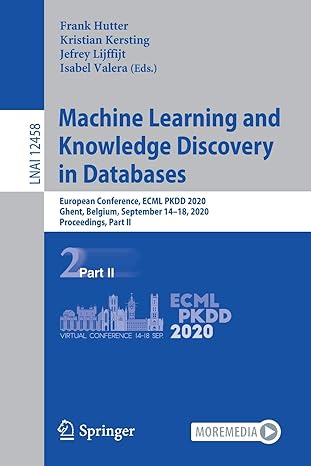Question
weeklies(plants_d): Consider a dictionary, plants_d , where the keys are names of plants, and the values are descriptions of how often to water them. Search
weeklies(plants_d): Consider a dictionary, plants_d, where the keys are names of plants, and the values are descriptions of how often to water them. Search through the entire structure for all plants that need to be watered "weekly", put them into a list, sort() the list, and return it.
plants_d :: dictionary of plant names to watering instructions.
Return value: sorted list of plants that need watering "weekly".
>>> weeklies({'shamrock':'weekly', 'cactus':'monthly', 'rose':'weekly', 'succulent':'biweekly'}) ['rose', 'shamrock']
>>> weeklies({'fern':'weekly', 'shamrock':'weekly', 'carnation':'weekly'}) ['carnation', 'fern', 'shamrock']
closest(d, what, here): Consider a dictionary that has pairs of integers as the keys, to represent a spot on a 2D grid (like pixels on a screen or integer points on the real numbers plane). The associated values will be strings, describing something that is present at that location. Using the distance formula between two points (see Wikipedia for a refresher if needed), complete the closest function that looks through the data for the spot closest to here that contains a what. For instance, "I'm at (2,3). Where's the closest gas station?" could be phrased as closest(d, "gas station", (2,3)). Don't worry about ties; anything equally closest will do (but we'll test with no ties to keep this short).
Parameters: o d :: dictionary where keys are pairs of integers and values are strings. o what :: string describing a point of interest. o here :: tuple of coordinates of where we currently are.
Returns: a pair of integers of the closest what to here. When no what is found, return the None value. (If we had learned about exceptions it would have been a great time for one here!)
Examples: o >>> d = {(3,1):'gas', (1,4):'gas', (2,1):'food', (5,5):'food'}
>>> closest(d,"gas",(2,2)) (3, 1) >>> closest(d,"gas",(5,5)) (1, 4)
>>> closest(d,"food",(5,5)) (5, 5) >>> closest(d,"food",(1,4)) (2, 1)
#closest thing isn't gas.
>>> print(closest(d,"hotel",(1,4))) None
file_counts(filename): Re-implementation of the counts function that obtains a list of numbers from a file. In the file, every single line will contain a single integer and nothing else. The last character will be a newline.
filename :: a string indicating the name of a file in the current directory.
Return value: a dictionary of int as keys and # of occurrences as the values.
file_counts("file1.txt") {100:3, 3:1, 9:2}
file_counts("file2.txt") {1:1, 2:1, 3:1, 4:1, 5:1}
file1.txt file2.txt
100 1 100 2 33 100 4 95 9
Step by Step Solution
There are 3 Steps involved in it
Step: 1

Get Instant Access to Expert-Tailored Solutions
See step-by-step solutions with expert insights and AI powered tools for academic success
Step: 2

Step: 3

Ace Your Homework with AI
Get the answers you need in no time with our AI-driven, step-by-step assistance
Get Started


